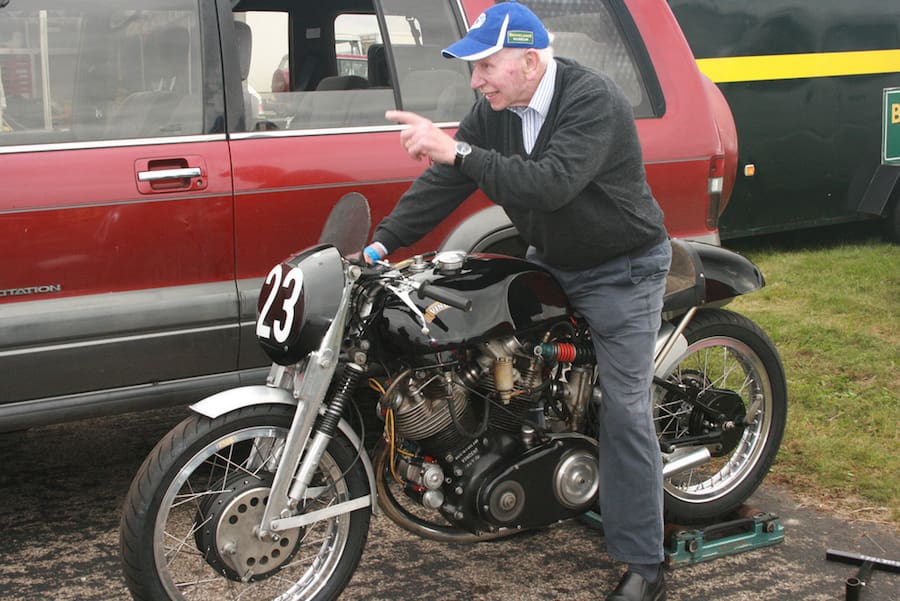He was submitted to St George’s Hospital in London on Friday afternoon where, with his wife and two daughters by his side, he passed away peacefully a short time later.
Surtees enjoyed a celebrated and unprecedented career in motorsport, becoming the 500cc Motorcycle Grand Prix World Champion in 1956, 1958, 1959 and 1960. He won a string of six Isle of Man TT races before becoming the only man who could successfully transfer his talent onto four wheels, lofting the Formula One World Championship trophy in 1964 and rewriting history in the process.
AMCN’s thoughts are with his wife, Jane, and daughters, Leonora and Edwina, during this time.
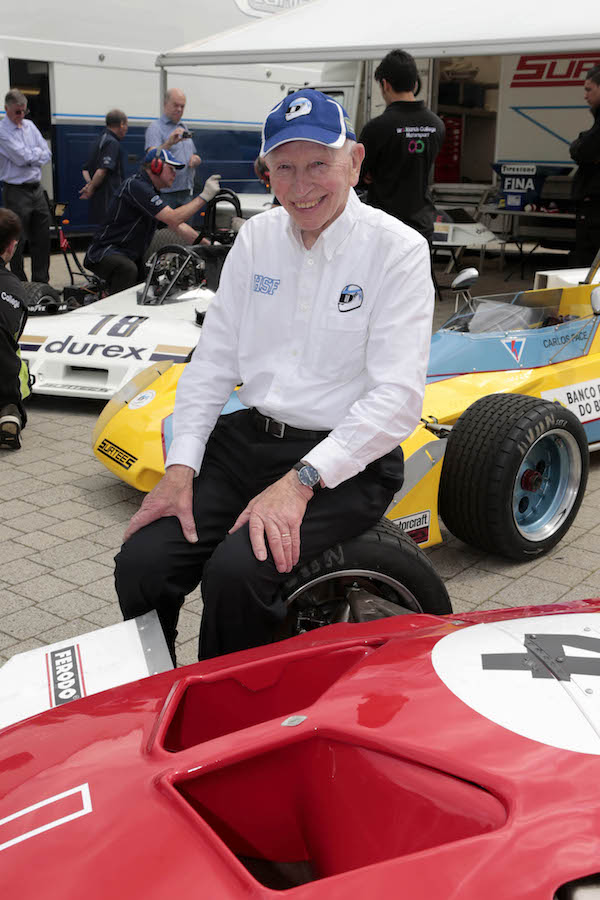
500CC – ABERDARE PARK, 1951
John Surtees is a giant of motorcycle racing: six times a TT winner, and seven world champion, with four 500cc and three 350cc titles. His last three GP years – 1958, 1959 and 1960 – saw him take the 350/500 double on the all-conquering MV Agustas, but he proved time and again that he had no need of machine superiority, with a string of tigerish performances when the chips were down.
The quiet Englishman moved out of bike racing into cars, propelled at least partly by the MV-dominated politics of the time. He rose to the top on four wheels, driving works Ferraris, and becoming the only man to win the world championship on four wheels as well as two.
Truly, a major figure, whose era lay between those of polished professionalism of Geoff Duke and the debonair natural talent of Mike Hailwood. Surtees bridged the gap with a somewhat austere dedication that included a great depth of technical and mechanical ability.
He was also a withdrawn and private figure. As a later historian* noted: “Though there were undoubtedly more popular champions (for he was disinclined to socialise and enjoyed limited appeal with the crowds) Surtees’s dedication and supreme professionalism … brought him widespread admiration and most of the honours the sport can bestow.”
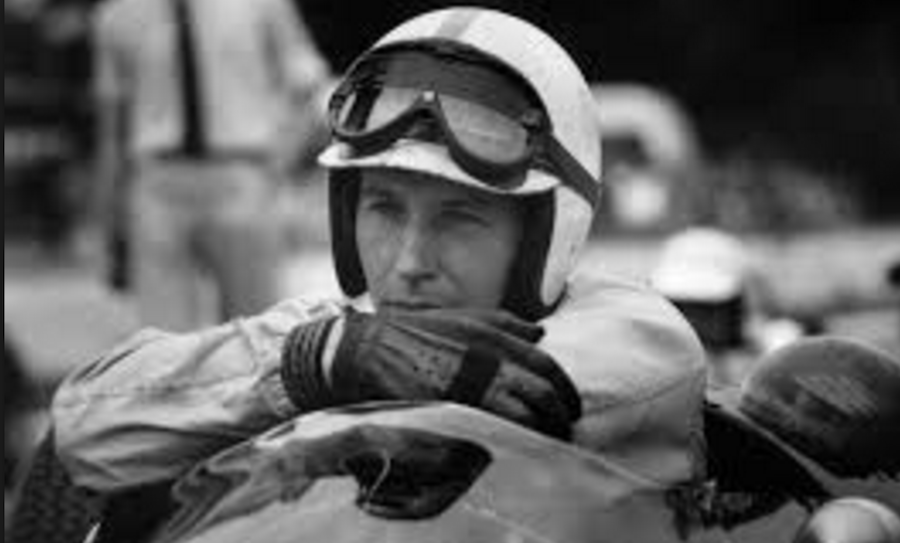
Many years later, able to look back on a career that extended beyond driving to fielding his own team of Formula One cars; the remembrance of his early days as a motorcyclist still rang warm enough for him to respond with enthusiasm when I asked him for his own choice of his greatest race. He spoke without pause, bringing back an era when Britain produced the finest road-racers in the world, and frequent race meetings at home were keenly fought and well-supported, attracting the cream of riding talent.
“I’d want it made clear that I don’t really have a greatest race. I don’t look at it like that – in racing, it’s always the next one that’s the most important.
“It’s easier to go along and pick a milestone, and the one turning point that comes to mind is the first race I won.
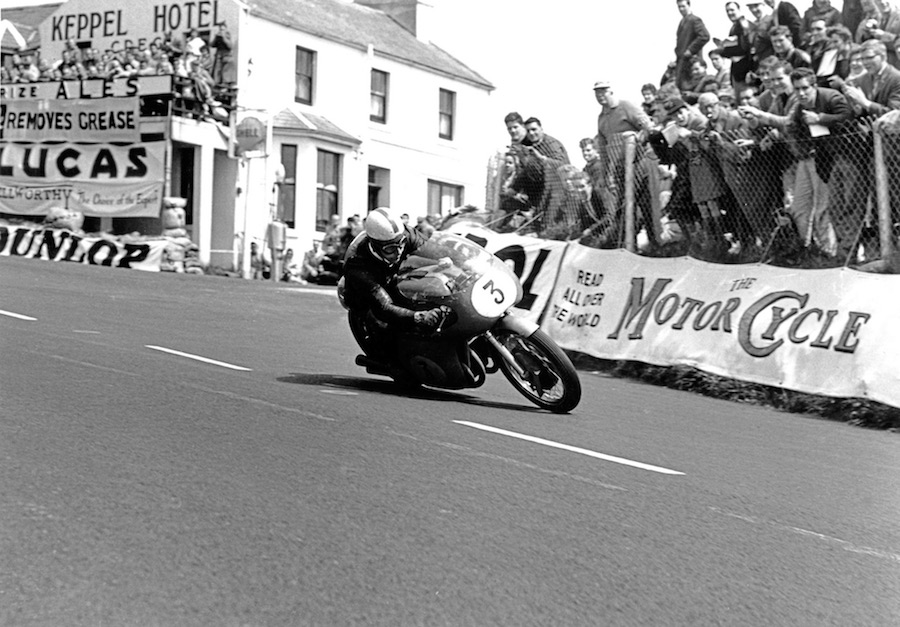
“I could also choose my first foreign win, or my first grand prix win. They were all milestones.
“But let’s stick with the first win, in 1951, in a British national meeting at a little park circuit in Wales, because that was the first time I really started to click what it was about, how to ride with the machine, and to get the basic rhythm that is essential on two or four wheels. And it was there that the confidence was born that is required to be a real competitor, and to win.
“Until then, I’d ridden a 250 Triumph and an Excelsior-JAP on grass tracks [his father had been a successful grass-tracker], and the Triumph a little on road tracks, with the main result that I’d skate up the road on my backside.
“Perhaps the discipline made the difference. We didn’t have much money, and my father had arranged to buy the Vincent I was riding from the works for 70 pounds on hire purchase. I was an apprentice at Vincent, earning by then three pounds per week, so it represented quite an investment.
“The bike had been a factory development machine for the new 500cc Grey Flash, and I bought it more or less in bits, with some parts unpainted, some black, and some gray. We had a can of Ford Silver that we used for the whole bike. A number of people since then have painted Grey Flashes in that colour, but it wasn’t a production paint job at all.
“I also had an experimental big-end fitted, at the request of the factory. It was a plain bearing instead of the standard roller, which meant modifying the oil supply, by reducing the feed to other parts of the engine and majoring on the big ends. It was an interesting sort of modification for a 17-year-old apprentice.”
Aberdare Park, in the Aberdare Valley in Wales, was “more like a Continental venue than a British. They got up a fantastic atmosphere, closing off the little town park, with the circuit running round the fish-pond. You had to lift your head to miss the odd tree, and such-like.
“There was a sort of circus that used to travel around to each meeting, the best of the short-circuit people. In those days, there was quite a big gap between them and the road-racing specialists from places like the TT and some Continental tracks. The gap closed up for a time, but nowadays it is probably as wide as it was then.
“There was very little of the stupid modern business of making production bikes the top classes in British racing. It was all pure racing machinery … of course, the Flash was basically a modified roadster, but the idea was to turn it into a racing machine. The new Vincent was up against Nortons, AJS’s, Moto-Guzzis and so on, some supported directly by the factories.
“We had an old Austin van, which we drove to all the races, with my mother sharing the driving. Usually, we used to camp, or sleep in the van; but at Aberdare the park regulations meant we were in digs.
“It was my first time at the track, and it was only a one-day meeting, so I was fairly busy in the morning, running in the Flash, learning a little of the circuit.
“I can’t remember details of the race, except that I won it. I’ll always remember the little prize-giving though. Being Welsh, they had a sing-song, which I probably joined in with.

Surtees won many races since then – including 22 in the 500 class alone, equalling Duke and Kenny Roberts. Some of these, in the years after the other Italian factories withdrew from competition, were rather hollow victories, on the four-cylinder MV Agusta against obsolete Norton and other singles … Surtees had some fast team-mates, but had little trouble in beating them. But he points out that when he raced Nortons again in the closing stages of his motorcycle career, before MV Agusta prevented him from doing so while failing to provide an alternative: “I was beating the same people that I’d beaten on the MV.”
Years later, although more involved with car racing than bikes, Surtees would always say that two wheels gave him the greatest satisfaction. He felt forced out by MV politics, and told me how he’d have liked to have continued racing bikes, or at least to have come back after the arrival of the Japanese works machines in the Sixties, to have a crack at Hailwood. “I did race against him, but we weren’t really contemporaries.”
But he was by then fully occupied with cars, and says: “You can’t have everything.”
It was enough that, on that afternoon in Aberdare Park, he and his new Grey Flash combined to begin an unrivalled career in motor sport.
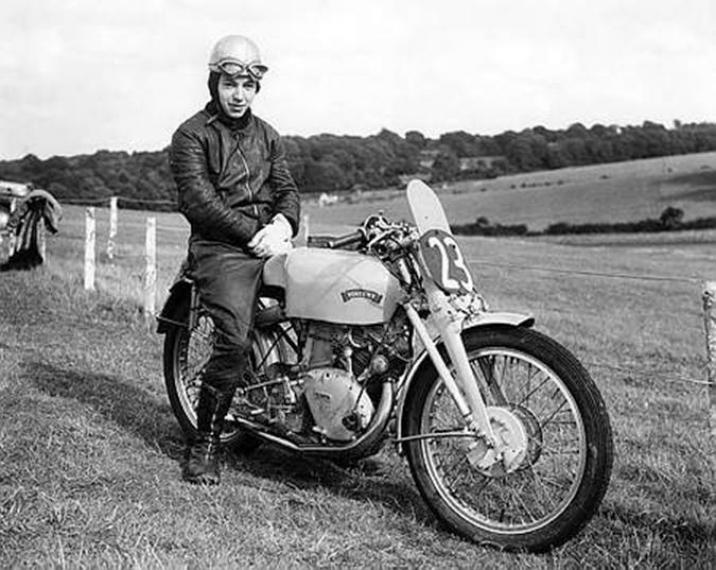
* Peter Carrick, Encyclopaedia of Motor-Cycle Sport (Robert Hale, London)
by Michael Scott

